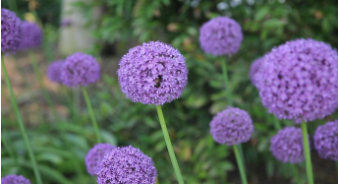
当前课程知识点:Culture and Tourism > Week 2: Mixed Heritage and Cultural Heritage Categories > 2.3 Special Heritage and Sustainable > 2.3.2 Transboundary Heritage, Serial Heritage, Serial/Transnational Heritage
返回《Culture and Tourism》慕课在线视频课程列表
返回《Culture and Tourism》慕课在线视频列表
在这一节中,我将讨论跨邦遗产和系列遗产的概念
就跨邦遗产而言
这些财产是一个连续的陆地或海域
跨越两个或两个以上相邻缔约国的边界
跨界的内容包括
能够将所有具有突出普遍价值的领域
和属性纳入单一领域
而不论目前的政治边界如何
这些财产可能有助于反映和鼓励
各国在共同遗产方面开展国家间和平合作
因此,准备提名
这种跨界遗产
和正在进行的保护和管理可能需要额外的努力
因为需要在不同国家的体制安排之间
进行协调与合作
每个国家的保护和管理机制可能不同
场地管理、展示
和保护的资源也可能不同
为解决这些问题,《业务准则》建议设立
一个联合管理委员会或类似机构,就管理问题提供咨询意见
第二个概念是系列遗产
是一系列不包含在单一边界内区域
也不是单独的区域
各部分可能非常接近或地理位置遥远
但所有部分都在一个国家内
跨国序列遗址在下面讨论
严肃的属性将包括两个或多个组成部分
部分由明确定义的相关联系
第一个组成部分应反映一段时间内文化
社会或功能的联系
在相关的情况下,提供景观、生态、进化或栖息地的连通性
第二
每一组成部分都应以实质性、科学性、易于界定和识别的方式
为整个产品的突出普遍价值作出贡献
并可包括无形属性等
由此产生的突出的普世价值应易于理解和交流
序列属性将包含两个或多个由明确定义的链接关联的各部分
同时,为了避免各部分过于分散
其提名的过程
包括组成部分的选择
应充分考虑其的整体可管理性和一致性
一些列的价值能抵抗诱惑
试图创造一个涵盖所有组成部分的单一边界
从而不包括没有突出普世价值属性的领域
这种方法可能会使提名更加复杂
因为要包括一系列离散的领域
因为每个领域都必须在提名档案中
此外,保护、养护和管理可能更加复杂
因为不同的机制可能适用于不同的离散组成部分
即使它们在同一个国家内
为了解决这些问题,《业务准则》指出
对各个组成部分进行协调管理是非常必要的
在某些情况下,可以适当地采用串行属性方法
来合理地绘制限制性太强的组件边界
正如在其他地方指出的,价值观、真实性和完整性
应该确定适当的边界和串行方法的应用
我会给几个例子
第一个是西南土司遗址
位于中国的西南山区
这些财产包括一些部落领地的遗迹
这些领地的首领在13世纪到20世纪初被中央政府任命为“土司”世袭统治者
土司制度起源于公元前3世纪
少数民族的王朝政体
其目的是统一国家行政
同时允许少数民族保留他们的风俗习惯和生活方式
构成遗址的老实城、唐崖、海龙屯堡遗址
对这种源于元明时期
中华文明的治理方式有着特殊的见证
所以土司遗址基于标准2
只需看看土司遗址,一些符合标准2的图片
老实城汤崖土司遗址,海龙屯要塞
清楚地展示了西南地区
地方民族文化之间的人文价值交流
以及中央政府的架构下的民族认同
按准则3,老实城遗址
唐崖遗址,海龙屯要塞遗址是
中国西南地区
土司治理制度的留下的印证
是对中国早期少数民族管理制度所产生的这种治理形式
以及对元、明、清时期中华文明的特殊证明
另一个重要的问题是关于系列遗产跨国遗产
系列跨国遗产是另一种形式的系列遗产
但在这种情况下,各部分位于多个国家
它的好处和问题
与跨界遗产和系列遗产的好处和问题类似
这些照片显示了一个地区的其他国家遗产的照片
这些跨邦遗产
可能跨越两个国家或三个国家
这是一系列关于国家遗址
就像我提到的土司遗址一样
它们分别在贵州、湖南和湖北三个地区
系列跨帮遗产可以在不同的地区
不同国家分散开,有跨国性质
所以在这一节中
我主要讲的是跨界和系列遗产的问题
-1.1 Introduction course outline and UNESCO World Heritage Program
--1.1.1 Introduction of culture and tourism course outline
--1.1.2 Introduction of UNESCO World Heritage Program(1)
--1.1.3 Introduction of UNESCO World Heritage Program(2)
-1.2 Cultural Heritage-1
--1.2.1 The meaning of culture heritage
--1.2.2 Criterion(i): masterpiece of human creative genius
--1.2.3 Criterion(ii): exhibit important interchange of human value
--1.2.4 Criterion(iii): bear a unique or at least exceptional testimony
--How can the public understand the importance of heritage?
-1.3 Cultural Heritage-2
--1.3.1 Criterion(iv): an outstanding example in human history
--1.3.2 Criterion(v): represent a culture or human interaction with environment
--1.3.3 Criterion(vi): associated with living traditions of outstanding universal significance
-1.4 Natural Heritage
--1.4.1 Natural heritage features, formations and criterions
--1.4.2 Cases studies of natural heritage
--Cultural landscape meanings: The case of West Lake, Hangzhou, China
--How to access heritage of your hometown?
-2.1 Mixed Culture and Natural Heritage
--2.1.1 Mixed heritage operational guidelines and cases (1)
--2.1.2 Mixed heritage operational guidelines and cases (2)
--2.1.3 Mixed heritage operational guidelines and cases(3)
-2.2 Authenticity, Integrity and Cultural Routes
--2.2.1 How to determine authenticity and integrity
--2.2.2 Heritage routes and heritage canals (1)
--2.2.3 Heritage routes and heritage canals (2)
--What do you think about cultural heritage categories?
-2.3 Special Heritage and Sustainable
--2.3.1 Physical remains of the history of technology and industry
--2.3.2 Transboundary Heritage, Serial Heritage, Serial/Transnational Heritage
--2.3.3 Intangible cultural heritage
--2.3.4 UNESCO World Heritage and Sustainable Tourism Programme
--Recovering the Memory of Ourselves for the Sustainable Cites
--Week 2 quiz
--What do you think about cultural heritage categories?
-3.1 The Australia’s Heritage System and Sydney Opera House
--3.1.1 The Australian Heritage System
--3.1.2 Case Study: The Sydney Opera House
-3.2 Role of the ISCCL and Cultural Landscape (1)
--3.2.2 Uluru-Kata Tjuta National Park
--3.2.3 Honghe Hani Rice Terraces
-3.3 Role of the ISCCL and Cultural Landscape (2)
--3.3.1 West Lake cultural landscape (1)
--3.3.2 West Lake cultural landscape (2)
-3.4 Rural Landscapes as Heritage
--3.4.1 ISCCL Principles Concerning Rural Landscapes as Heritage
-3.5 Case Study: Mongolian Altai
--3.5.1 Nature Culture Integration & the Mongolian Altai(1)
--3.5.2 Nature Culture Integration & the Mongolian Altai(2)
--Week 3 quiz
--Discussion: What do you think is the role of ISCCL?
-4.1 Introduction of the Meaning of 'landscape’
--4.1.1 Brief introduction of landscape and culture
--4.1.2 The conceptual framework of cultural landscape
-4.2 Landscape Values
--4.2.1 The word “landscape” itself and differences in Western, Eastern
--4.2.2 Cultural significance for heritage source
--Discussion: What do you think the cultural landscape attracts you?
-4.3 Reading the Landscape: Identification and Assessment
--4.3.1 Planning model for heritage conservation management policy
--4.3.2 Cultural landscape resources evaluation steps
--Article: Cultural mapping: Intangible values and engaging with communities with some reference to As
-4.4 Case Study: Wingecarribee Historic Landscape
--4.4.1 Case study:Wingecarribee historic landscape study(1)
--4.4.2 Case study:Wingecarribee historic landscape study(2)
--Week 4 quiz
--Discussion: What should we do to strengthen the protection of cultural landscape?
-5.1 Indigenous Tourism
--5.1.1 Indigenous tourism background
--5.1.2 World heritage and indigenous peoples
--5.1.3 Tourism issues at Canadian indigenous world heritage sites
--Discussion: What challenges indigenous World Heritage faces?
--Article: State conceptions of indigenous tourism in Chile
-5.2 Case Study and Conclusion: Great Expectations for Tourism
--5.2.1 Case study Pimachiowin Aki
--5.2.2 Conclusions:Great Expectations for Tourism
--Disussion: Do you have any experience of indigenous tourism?
--Week 5 quiz
-6.1 The Definition of Heritage in Heritage Performance Study
--6.1.1 The definition of heritage in heritage performance study
--6.1.2 Heritage performance and meaning making
--6.1.3 Two key issues emerging from qualitative study
-6.2 Heritage Performance - Evidence from Australia, England and USA
--6.2.1 Heritage performance - reinforcement
--6.2.2 Heritage Performance - inter-generational communication and social values
--6.2.3 Heritage performance - recognition and respect
--6.2.4 Heritage performance - education
--Article:Theorizing museum and heritage visiting
-6.3 The Conclusion of Heritage Performance
--6.3 The conclusion of heritage performance
--Week 6 quiz
--Discussion: What kinds of heritage performances have you learned in this week?

